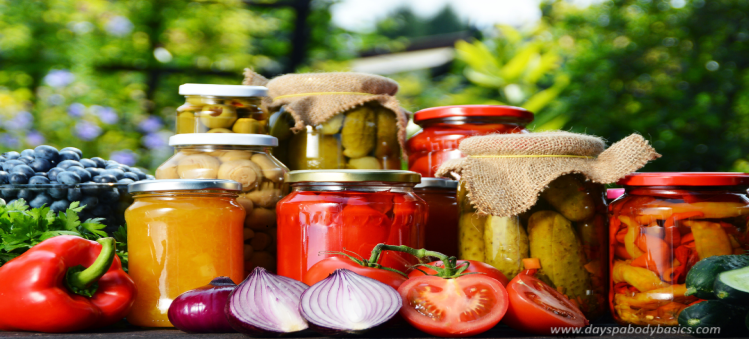
Compound Feed Market by Type of Ingredient (Cereals, Cereal by-products, Oilseeds & Derivatives, Fats & Oils, Minerals, Vitamins, Additives, and Others), by Livestock (Poultry, Swine, Ruminants, Aquaculture, Pets, and Others), by Form (Pellets, Mash, Crumbles, and Others), and by Source (Plant-Based and Animal-Based) – Global Opportunity Analysis and Industry Forecast, 2024– 2030
Compound Feed Market Overview
The global Compound Feed Market size was valued at USD 540.99 billion in 2023 and is predicted to reach USD 707.58 billion by 2030 with a CAGR of 4.6% from 2024-2030. Compound feed, also known as animal feed, refers to the sector of the industry that produces and distributes mixed feed formulations for livestock, including poultry, cattle, swine, and aquaculture.
These formulations contain a balanced combination of essential nutrients, such as proteins, vitamins, minerals, and energy sources, tailored to meet the specific nutritional requirements of each animal species. The market includes various players, including feed manufacturers, suppliers of raw materials, distributors, and retailers aiming to improve feed efficiency and animal health.
Market Dynamics and Trends
The global compound feed market is experiencing significant growth due to the increasing adoption of poultry feed, that provides a convenient means of supplying essential nutrients for optimal poultry health, growth, and productivity. As poultry producers prioritize the nutritional well-being of their flocks, the demand for feed formulations continues to rise.
For instance, in January 2024, Devenish introduced a new oregano feed supplement called OregoPro. This high-concentration oregano product is designed to enhance intestinal health and nutrient absorption in poultry, that are crucial for maximizing poultry performance and overall productivity.
Moreover, the addition of amino acids as additives in livestock feed is another factor driving the global demand for feed formulations by promoting growth, muscle development, and improving overall animal health. As awareness of amino acids spreads, companies worldwide are introducing products enriched with these essential nutrients to ensure animals receive the necessary elements for optimal performance.
For instance, in May 2022, Metex Noovistago launched a new range of animal health solutions called inneus for pigs and poultry. The inneus range of products is based on a synergistic combination of functional amino acids and specifically selected polyphenols with aim to positively influence intestinal health.
Additionally, the expansion of the livestock population further propels the compound feed market growth by increasing the demand for nutritious and balanced feed solutions. According to the International Livestock Research Institute, the global cattle population is projected to grow from 1.5 billion to 2.6 billion by 2050, while the global goat and sheep population is expected to rise from 1.7 billion to 2.7 billion by the same year. These feed additives are essential for optimizing animal health, enhancing growth rates, and ensuring efficient nutritional requirements for the growth of the livestock.
However, the high cost of raw materials limits the ability of livestock caretakers to afford high-quality compound feed, thereby restraining the compound feed market growth. On the contrary, the increased adoption of alternative protein sources, such as insect-based proteins or microbial proteins, as viable ingredients in compound feed formulations is expected to boost the market in the coming years. This shift towards alternative protein sources will help reduce reliance on traditional feed ingredients including soybean protein meal, and open up new avenues for innovation and market growth.
Market Segmentations and Scope of the Study
The compound feed market report is segmented on the basis of type of ingredient, livestock, form, source, and region. On the basis of type of ingredient, the market is segmented into cereals, cereal by-products, oilseeds & derivatives, fats & oils, minerals, vitamins, additives, and others. On the basis of livestock, the market is classified into poultry, swine, ruminants, aquaculture, pets, and others. On the basis of form, the market is divided into pellets, mash, crumbles, and others. On the basis of source, the market is distributed into plant based and animal based. The regional breakdown includes regions such as North America, Europe, Asia-Pacific, and the Rest of the World (RoW).
Geographical Analysis
Asia-Pacific region dominates the compound feed market share and is expected to continue its dominance during the forecast period. This is due to the rising livestock population that boosts the demand for effective and balanced nutrition among animals.
According to the data published by the Ministry of Fisheries, Animal Husbandry & Dairying in 2023, there are about 303.76 million bovines (cattle, buffalo, mithun and yak), 74.26 million sheep, 148.88 million goats, 9.06 million pigs and about 851.81 million poultry. As livestock numbers grow, the demand for feed designed to meet the nutritional needs of a larger livestock population increases, driving market expansion.
Moreover, the growing need for animal proteins in feed formulations, aimed at enhancing the growth, health, and productivity of livestock, further increases the compound feed market demand.
According to the data provided by the Government of India, India is the largest producer of Buffalo Meat, 2nd largest producer of Goat Meat, and 3rd largest producer of eggs in the World. This growth of meat and egg production directly increases the production capacity of animal protein, thereby creating growth opportunities in this sector.
On the other hand, in the North American region, the compound feed market is experiencing steady growth, driven by increasing collaborations between companies and research institutions aimed at introducing probiotics to the swine’s feed industry. These collaborative efforts foster the development of innovative feed products for enhancing the operations of swine.
For instance, in January 2024, the KENT Nutrition Group launched a new swine-origin probiotic called EFFICOR, in collaboration with a leading university. EFFICOR helps improve health, productivity, and overall well-being of pigs.
Also, the increasing demand for pellets in nutrient-rich feed aimed at reducing feed wastage and enhance feed efficiency is driving the sector. As livestock producers prioritize minimizing feed spillage or sorting by livestock, the adoption of pelleted feed gains significant attention.
For instance, in September 2022, Cargill launched a new pelletized chick starter feed called Neochicc, designed for broiler chicks. This feed is formulated with precise amounts of protein, starch, fat, and additives to promote maximum nutrient digestibility. This growing popularity of pellets encourages livestock producers to opt for feed products, consequently increasing the overall market demand.
Competitive Landscape
Various market players operating in the compound feed industry include Cargill, Inc., Archer-Daniels-Midland Company (ADM), Charoen Pokphand Foods, New Hope Group, Land O’Lakes, Inc., Nutreco N.V., Alltech, Inc., Guangdong Haid Group Co., Ltd, Weston Milling Group, and Feed One Co., Ltd. These companies continue to adopt various development strategies including acquisitions and business expansions to maintain their dominance in the sector.
For instance, in April 2024, Nutreco, a global leader in animal nutrition and aquaculture, opened a new fish and poultry feed production facility in Ibadan, Nigeria. The state-of-the-art facility holds the capacity to manufacture 125,000 metric tons of extruded fish and animal feeds per year.
Moreover, in May 2023, Cargill announced to expand its retail feed operation by building a new facility in Granger, Washington. The new facility is capable of producing more than 125,000 tonnes of feed annually, that is packaged and sold under Cargill’s Nutrena brand and many customers’ brands.
Additionally, in December 2023, Archer-Daniels-Midland Company (ADM) acquired PT Trouw Nutrition Indonesia, a leading premix manufacturer. This acquisition is expected to enhance ADM's premix production capabilities, allowing the company to provide localized solutions and customized services swiftly to customers in Indonesia and the broader region.
Key Benefits
-
The report provides quantitative analysis and estimations of the compound feed market from 2024 to 2030, which assists in identifying the prevailing industry opportunities.
-
The study comprises a deep-dive analysis of the current and future compound feed market trends to depict prevalent investment pockets in the industry.
-
Information related to key drivers, restraints, and opportunities and their impact on the market is provided in the report.
-
Competitive analysis of the players, along with their market share is provided in the report.
-
SWOT analysis and Porter's Five Forces model is elaborated in the study.
-
Value chain analysis in the market study provides a clear picture of the roles of stakeholders.
Compound Feed Market Key Segments
By Type of Ingredient
-
Cereals
-
Cereal by-products
-
Oilseeds & Derivatives
-
Fats & Oils
-
Minerals
-
Vitamins
-
Additives
-
Others
By Livestock
-
Poultry
-
Swine
-
Ruminants
-
Aquaculture
-
Pets
-
Others
By Form
-
Pellets
-
Mash
-
Crumbles
-
Others
By Source
-
Plant-Based
-
Animal-Based
By Region
-
North America
-
The U.S.
-
Canada
-
Mexico
-
-
Europe
-
The UK
-
Germany
-
France
-
Italy
-
Spain
-
Denmark
-
Netherlands
-
Finland
-
Sweden
-
Norway
-
Russia
-
Rest of Europe
-
-
Asia-Pacific
-
China
-
Japan
-
India
-
South Korea
-
Australia
-
Indonesia
-
Singapore
-
Taiwan
-
Thailand
-
Rest of Asia-Pacific
-
-
RoW
-
Latin America
-
Middle East
-
Africa
-
REPORT SCOPE AND SEGMENTATION:
|
Parameters |
Details |
|
Market Size in 2023 |
USD 540.99 Billion |
|
Revenue Forecast in 2030 |
USD 707.58 Billion |
|
Growth Rate |
CAGR of 4.6% from 2024 to 2030 |
|
Analysis Period |
2023–2030 |
|
Base Year Considered |
2023 |
|
Forecast Period |
2024–2030 |
|
Market Size Estimation |
Billion (USD) |
|
Growth Factors |
|
|
Countries Covered |
28 |
|
Companies Profiled |
10 |
|
Market Share |
Available for 10 companies |
|
Customization Scope |
Free customization (equivalent up to 80 working hours of analysts) after purchase. Addition or alteration to country, regional, and segment scope. |
|
Pricing and Purchase Options |
Avail customized purchase options to meet your exact research needs. |
Key Players
-
Cargill, Inc.
-
ADM
-
Charoen Pokphand Foods
-
New Hope Group
-
Land O’Lakes, Inc.
-
Nutreco N.V.
-
Alltech, Inc.
-
Guangdong Haid Group Co., Ltd.
-
Weston Milling Group
-
Feed One Co., Ltd.




 Speak to Our Analyst
Speak to Our Analyst


































